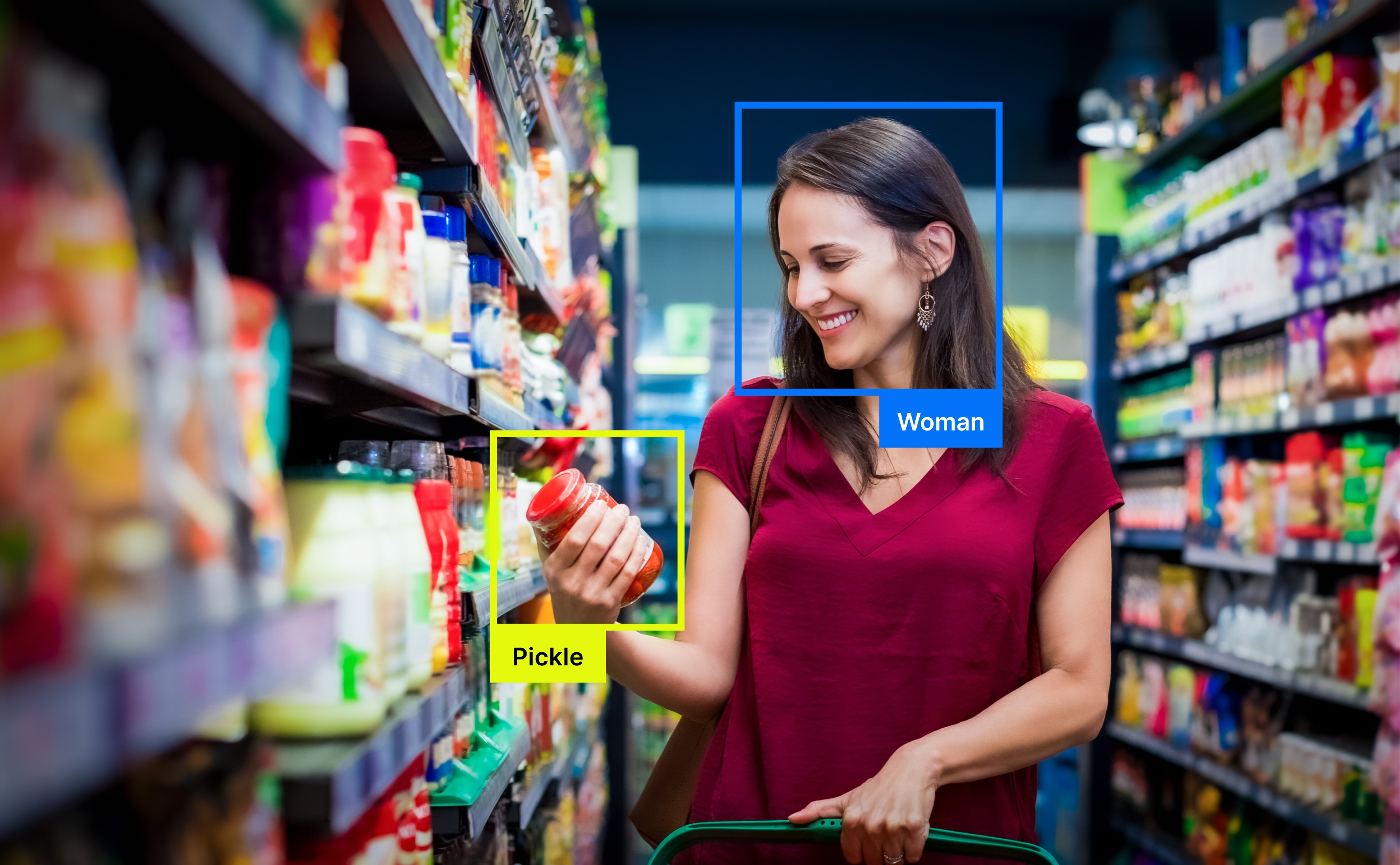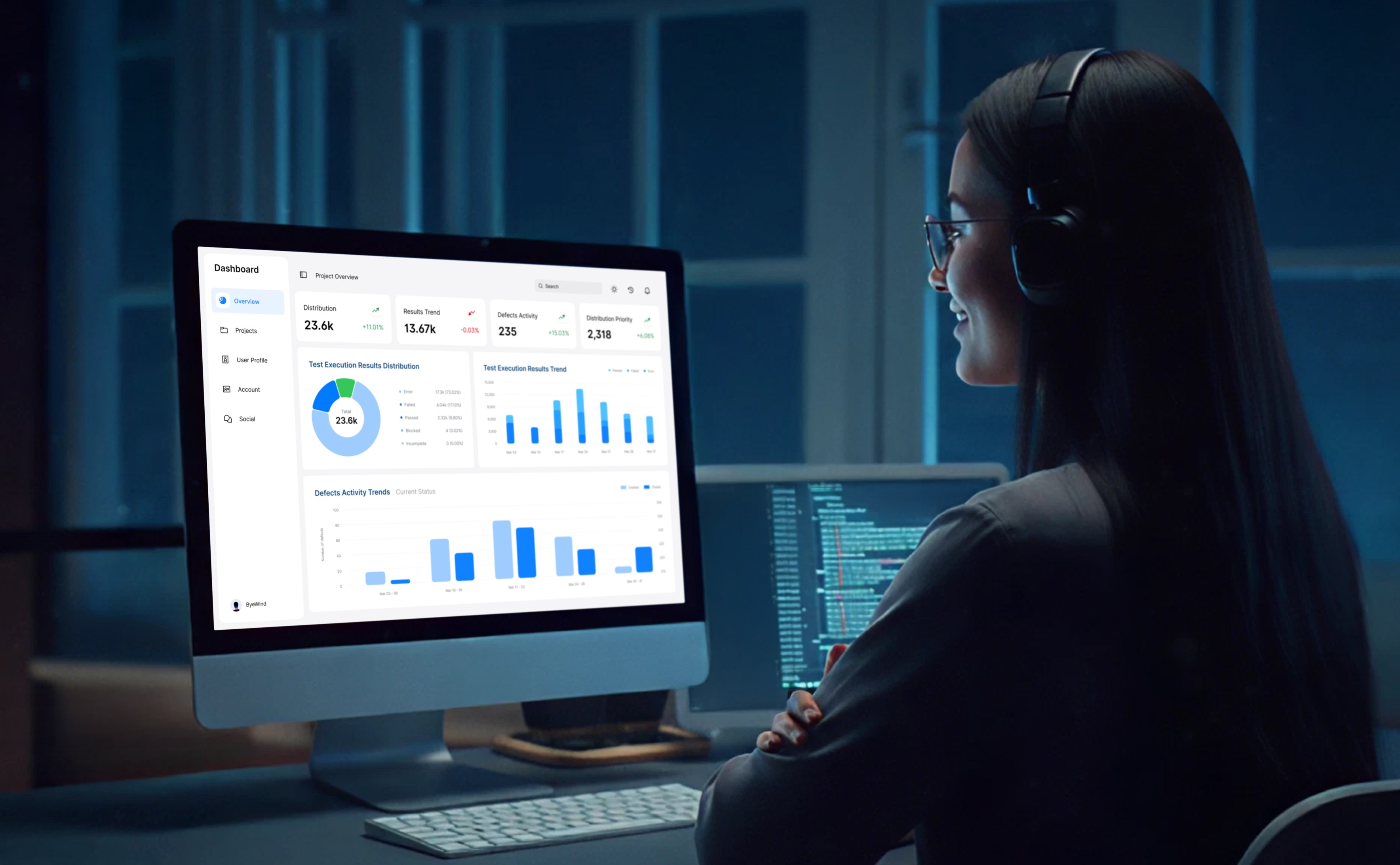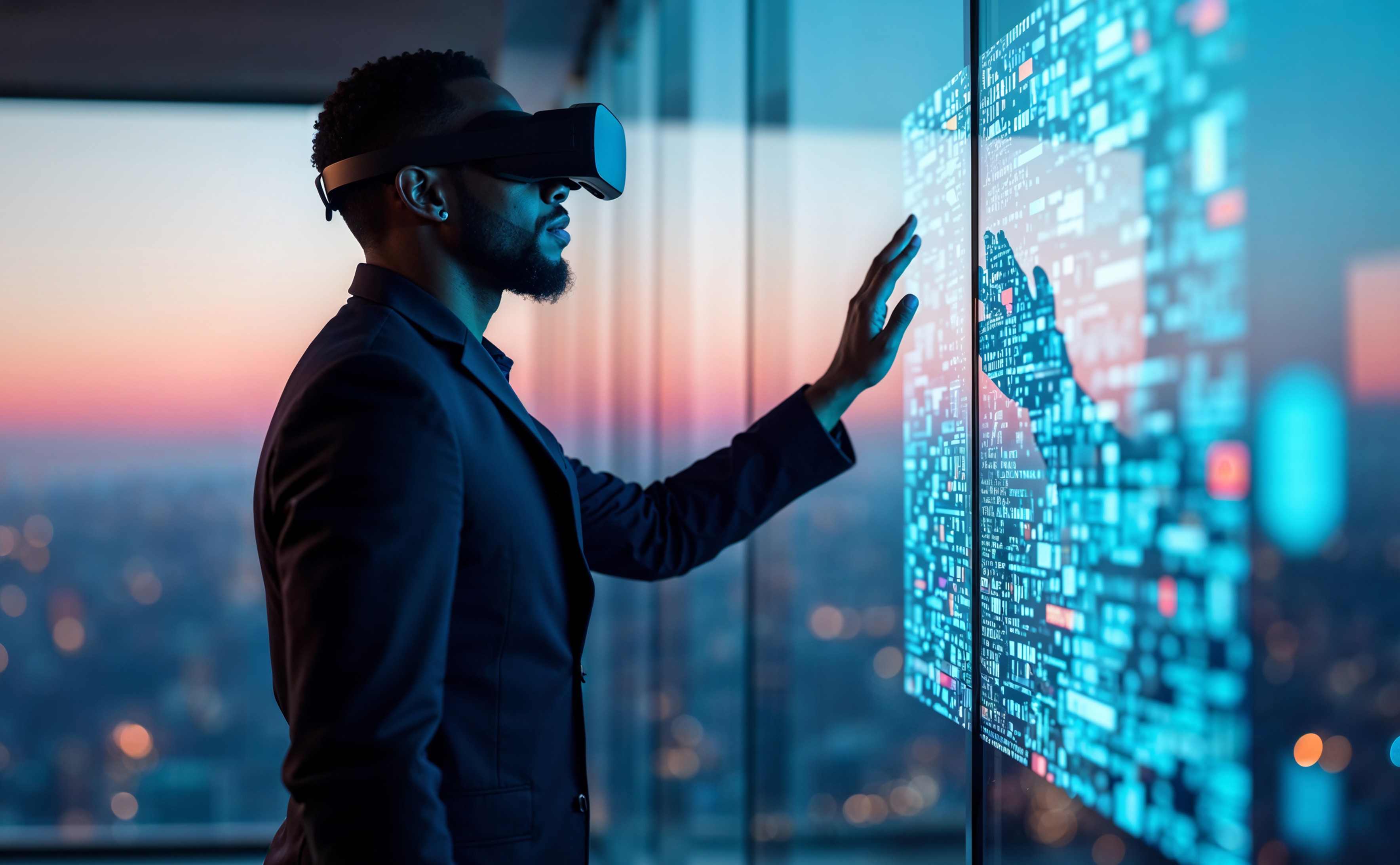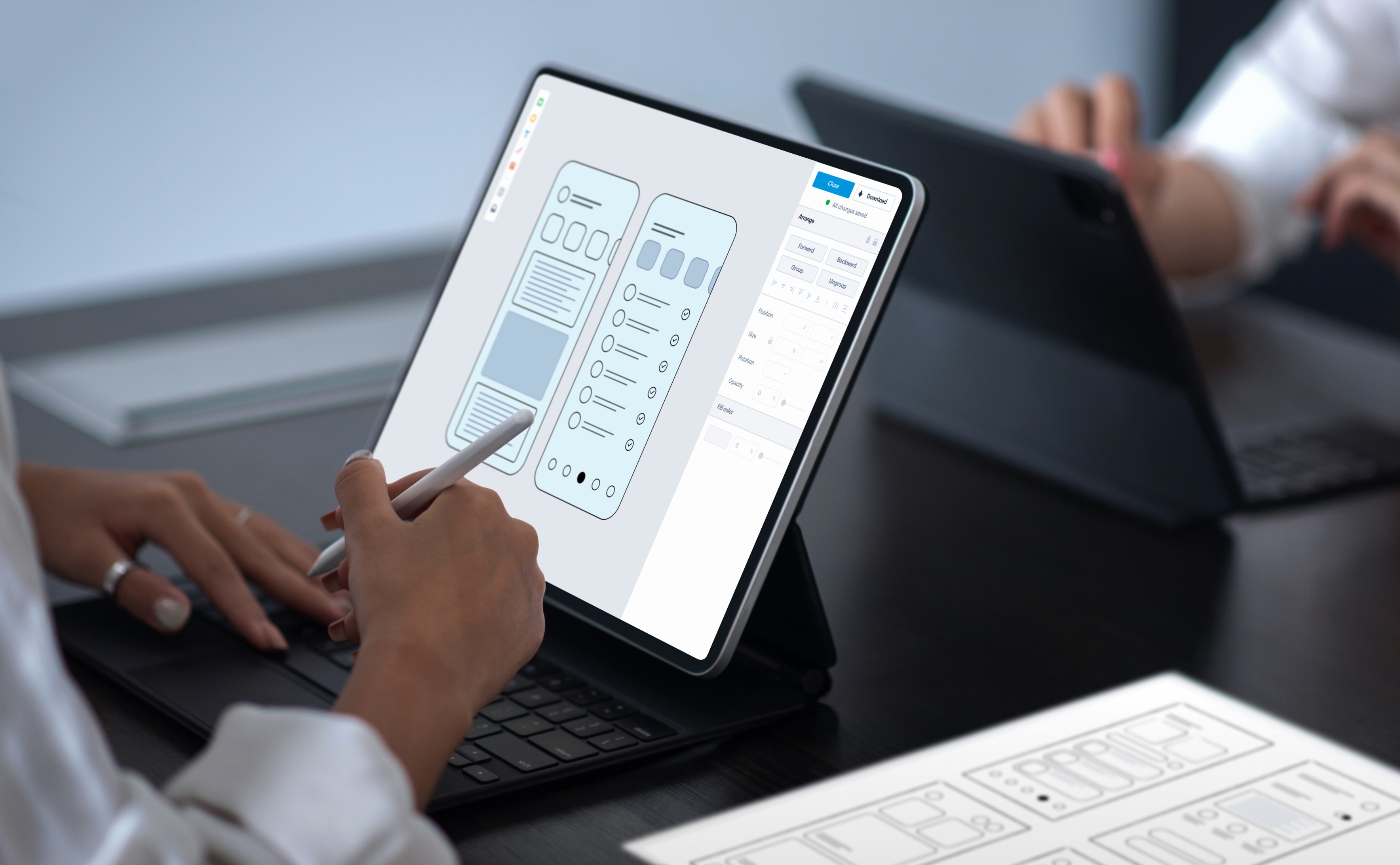Artificial Intelligence in Retail: How AI is Changing Retail

- Why Do You Need AI in the Retail Industry?
- How is AI Changing the Retail Industry?
- AI Applications to Win Customers
- AI Applications for Improving Retail Operations & Optimizing Inventory Management
- AI in Retail: Revolutionizing Sales & Marketing Strategies
- Enhancing Cybersecurity and Fraud Detection in Retail with AI
- Transform Your Retail Operations with the AI Edge
- Why Do You Need AI in the Retail Industry?
- How is AI Changing the Retail Industry?
- AI Applications to Win Customers
- AI Applications for Improving Retail Operations & Optimizing Inventory Management
- AI in Retail: Revolutionizing Sales & Marketing Strategies
- Enhancing Cybersecurity and Fraud Detection in Retail with AI
- Transform Your Retail Operations with the AI Edge
Artificial Intelligence keeps rolling with its powerful hold on how e-commerce platforms and retail storefronts operate. AI-driven processes help retailers utilize the opportunities to thrive in an ever-evolving competitive industry.
AI in retail improves the purchase experience by delivering custom-tailored recommendations and dynamic pricing according to the buyers’ behavior and preferences. It elevates the relevance of product suggestions and enhances sales and customer engagement.
In physical storefronts, AI tools optimize store layouts and track buyer behavior to offer valuable insights. Such insights let retailers make data-driven decisions to scale store organization and improve the shopping experience.
By utilizing AI, retailers can overcome core operational challenges, adapt quickly to market changes, and offer unparalleled services. AI transforms the retail landscape, which makes it possible for businesses to be ever-competitive and suit the changing customer needs. In this article, we shall explore the role of AI in retail, and how the capabilities of AI change the retail segment incredibly.
Why Do You Need AI in the Retail Industry?
When talking about retail, AI specifically refers to predictive analytics and machine learning capabilities. AI technology can collect and process information, further denote patterns, and make sense of large amounts of data.
The subsequent step is supplying accurate predictions and forecasts to facilitate data-centric decision-making mechanisms. Retailers can use AI algorithms based on customer information such as the details gathered when a buyer uses the store application.
The results of utilizing this information include exceptional customer experience, high-end profits, and minimized expenses. According to reports, the global AI-in-retail market is expected to top 24 billion USD by 2028 and then cross 45 billion USD by 2032.
AI is transforming the retail industry with a significant change in supply chain, inventory, and logistics, with high-end operational efficiency to fulfill customer expectations that give them a competitive edge. AI-powered chatbots enable better customer service, with fraud detection systems that safeguard both customers and retailers.
Nevertheless, AI enables price optimization and facilitates visual search capabilities. A key example is Amazon, which uses GenAI for personalized recommendations, voice shopping with Alexa, supply chain optimization, fraud detection, cashierless storefronts, etc.
Scenario: Amazon's Use of Generative AI in Retail
The integration of Gen AI into retail operations has helped Amazon to improve customer engagement, efficiency, and innovation. Also, Amazon Web Services offers Gen AI solutions to various retail and consumer goods businesses.
- Automates Processes: Generative AI lets Amazon predict demand patterns, scale inventory management, and reduce wastage. It also automates developing product descriptions and personalized content marketing, improving campaign efficiency.
- Improving Customer Engagement: Gen AI offers personalized buying experiences by custom-tailoring recommendations and search results based on the users’ preferences. AI-driven virtual assistants such as Alexa improve customer interactions and provide real-time assistance.
- Triggering Innovation and Product Development: Gen AI also scales the development of new products by ensuring accurate and detailed product information online. It also aids in identifying innovative product ideas after analyzing the market trends and customers’ feedback.
- Enhancing Employee Productivity & IT Efficiency: AI improves employee productivity by offering quick access to information and augmenting the decision-making process. GenAI lets developers write code quickly and with the least errors using intelligent suggestions and auto-completion.
- Dynamic Pricing: Predictive pricing is the most advanced AI-based dynamic pricing method. It depends on Machine Learning pricing and incorporates optimization and forecasting algorithms.
How is AI Changing the Retail Industry?
AI in the retail sector is useful in a plethora of segments. It is highly used to scale up the level of customer service and personalized buying experience or to optimize business processes. Let’s explore the AI trends that transform the retail industry:
Chatbots and Virtual Assistants
Cashier-free storefronts have evolved to minimize long queues and significantly cut down operational costs. Leading retailers like Burberry have adopted AI-driven chatbots to improve customer service, search, notifications, and suggestions of similar products. Generative AI assistants make shopping easier, more convenient, and more precise, which elevates the buyers’ experience.
Visual Search
The technology enables users to search for products with images instead of text. Customers can upload images or use the device’s camera to pick similar products online, thus improving the shopping experience by simplifying search and offering relevant results depending on visual characteristics. One example is Pinterest, where users can choose an item in an image and pick similar products among different retailers, which connects users with the relevant brands.
Adaptive Homepages
The personalized homepages help adjust content, layout, and product recommendations based on user preferences, behavior, and past interactions. AI algorithms understand various browsing patterns and buying history to make a customized experience, thereby improving engagement and enhancing sales through showcasing specific products. Nike is one such example, with personalized product recommendations based on purchase history on its home page. They also use location-specific content to promote the stores and events near the user’s place.
Ensures Frictionless Purchase and Checkout
Let it be about running a small business or a multinational store, retailers strive to build personalized, convenient, and pleasant shopping experiences. However, these purchase experiences are no longer enough to fulfill the needs of tech-savvy consumers.
They seek frictionless shopping experiences, where most interactions with the retailer are analyzed with technologies such as computer vision, AI, deep learning, and software solutions, making the buying journey undoubtedly seamless. By automating most transactional interactions, the workforce can help customers and perform core value tasks.
Streamline and Automate Inventory Management
Maintaining accuracy in inventory is a major concern for retailers. Linking major parts of the retailer’s operations and implementing AI, helps them earn a comprehensive view of the shoppers, stores, and products to support inventory management. Intel-based responsive retail technologies have made it possible to gather and process information from cameras, sensors, and various other sources.
Equipped to bridge the concerns of technology and prevent data silos, the platform supports software and sensors from third parties. Other versions of AI inventory management identify out-of-stock products and pricing issues with smart shelves. For example, the inventory robots send alerts to the staff in case of misplaced items or low stock. As a consequence, retailers can make sure that the stores run efficiently and they get more time to improve their shopping experience.
Want to bring these AI innovations to your retail strategy?
Let's talkLoading...
AI Applications to Win Customers
1. Helping buyers with virtual try-on
From the buyers’ perspective, AR (Augmented Reality) technology is a great application. Rather than making a wild guess on whether a shirt fits only using measurements, the buyer can check how it would look on them. Here are a few AI in retail examples:
-Walmart helps customers share selfies of their figures and virtually try on clothes to gain a perfect idea of what the products would look like on them.
- Amazon Fashion uses AR technology to help Snapchat users try on glasses virtually.
2. Letting customers skip the queue
With consumers evolving keener on technology, retailers must ensure that every aspect of the shopping experience works great. In physical storefronts, certain transactional processes can be automated, which frees up human associates to perform high-level activities. Similar to what Apple has implemented in the physical stores, doing away with a checkout counter can also improve the enjoyment of the process as customers experience a seamless checkout.
Another example is Amazon Go, which lets the buyers come into the store via a gate with a scanner that analyzes their account with the help of a smartphone application. The users can browse and keep items in their baskets as they would in a conventional store. Here, the computer vision records all products they have purchased. Then, they skip the queue and walk out, the payment gets debited from their accounts.
3. Personalizing for experience and profit
Customers always crave experiences that are custom-tailored to suit their preferences. For retailers, it means personalized shopping using AI. Digital signage embedded using computer vision can trigger customer engagement and add to the real-time advertising that talks to a specific audience.
It can also be used to gather data on which kinds of customers purchase and when. This data can be used, for instance, by the merchandising teams to make great decisions regarding product promotions. Personalization can also be enabled with the help of POS (Point Of Sale) systems that can gather data on what was bought and utilize the data to build new tailored product recommendations.
AI-driven e-commerce tools have opened up more lucrative opportunities for retailers to make visitors excited. What has made it more interesting? The answer is AI-aided personalization. With personalization in AI, you get to determine the customer intent and customize users’ experience to align it with their interests. If you’ve been gathering data as individual buyers browse and purchase on your site, you know ideally what they want. Analyzing this data lets you accurately classify and offer online retail experiences customized to buying patterns and customer preferences.
You can transform this customer-behavior information into merchandising guidance, which your managers can leverage to inform successful promotions or provide product recommendations according to the recent browsing and the items they add to the virtual cart. The better your customized recommendations and the relationship you establish with the customers, the more you will be able to attain shopper loyalty, and grab shoppers, and customers to stay on your website a bit longer, while also taking revenue numbers higher.
4. Offering incredible customer service
AI in the retail industry raises the bar of customer satisfaction. Recall those days when people stood in long lines just to check out. In those days, stores used to close hours after 5 p.m. However, today you have a 24 x 7 availability and a friendly bot to assist who can understand what you want, still happy to chat at 3 am. This is underlined by the promise of AI, with the comfort of filling your cart with a bunch of cool stuff, helping you instantly checkout, sit back, and relax.
In-store robots like say, those deployed by Lowe’s and Walmart, assist customers by offering information, directing users to products, answering queries, etc. This minimizes the wait times and provides prompt help to the customers. Another significant technology is the use of automated checkout systems, mobile payment, self-checkout kiosks, etc, which lets customers reduce the hassle of long waiting times.
AI chatbots on H&M and Sephora provide recommendations and answer queries round-the-clock, which are the best examples of how AI has redefined the customer services segment. Automated inventory management tools make sure that the stock levels remain tracked properly and adjusted as per the customers’ requirements, eliminating out-of-stock concerns and creating a personalized shopping experience.
AI Applications for Improving Retail Operations & Optimizing Inventory Management
Retailers can integrate AI processing into their operations picture and see all the information they require about their products, buyers, e-commerce experiences, and storefronts. It means the retailers can enjoy benefits like:
- Accurate Demand Forecasting: First, we had paper spreadsheets, and then the online equivalent came into being. Now, with AI in the picture, the accuracy of demand forecasting has attained new heights. AI lets retailers make confident pricing decisions, order an ample quantity of stock with predictive analytics, and optimize product placement. This helps shoppers locate the products they want quickly when they need them from the right locations.
With a detailed understanding of customer behavior and trends, you can make it easy to meet their demand and offer the best products possible. AI lets retailers enhance demand forecasting, arrive at feasible pricing decisions, and optimize the placement of products. As a consequence, customers link with the right products at the right place and at the right time. Predictive analytics ensure that you maintain the relevant amount of stock so that the stores are not confined to too little or too much.
Meanwhile, AI can also track the information from online channels with the best e-commerce strategies. AI in retail helps you understand the customers’ intent and optimize the buyer's journey accordingly. One such example is heat mapping used in-store. The integration of computer vision and cameras analyzes which products get picked up, which get returned, and where the buyer moves after leaving the shelf. This intelligence can be helpful to build experiences that grow engagement with products and help buyers understand more. - Role of AI in Single View of Inventory (SVI): By utilizing the data for inventory management optimization, AI revolutionizes the Single View of Inventory (SVI). It gathers data from different sources, understands patterns, and predicts demand to make sure that the stock levels are optimal. AI-driven anomaly detection improves supply chain visibility, and predictive analytics ensure proactive risk mitigation. Consequently, AI drives high-end inventory accuracy, minimizes costs, and achieves utmost customer satisfaction through data-centric decision-making.
- Demand forecasting: Accurate predictions help in preventing stockouts and overstocks, thereby optimizing inventory levels.
- Data-driven insights: AI closely analyzes huge datasets to explore hidden trends and patterns.
- Real-time visibility: Continuous tracking of inventory makes sure that the supply chain operations are efficient.
- Risk mitigation: AI analyzes possible disruptions and recommends proactive measures.
- Cost optimization: Minimises carrying costs and improves sales through optimized inventory. - Automated Reordering: Automated replenishment facilitates the seamless movement of goods to production lines, storage systems, and pick stations for a hassle-free flow of inventory. This computerized method of analyzing the lead times, sales requirements and inventory levels helps automatically reorder stock as required. With automated replenishment systems, businesses become capable of maintaining sufficient inventory levels and serving customers without delays or interruptions.
- Supply Chain Optimization: AI-driven forecasting can minimize errors in the supply chain to a great extent. It also helps in the reduction of lost sales, product unavailability, warehousing costs, and administration costs. This is because of many factors as listed below:
- Identification of the fastest item-retrieval route on the warehouse floor.
- Reduction of excess stock levels and simplification of the price-markdown process through smart automation.
- Camera vision technology and sensors to show managers clearly what needs to be restocked.
- Managers can view which products have been bought, returned, and where buyers venture after leaving the item location.
- Alerts can be given when product levels fall below a certain level. - Computer Vision: Computer vision lets machines extract relevant data from digital images and videos. With computer vision-driven cameras and sensors, retailers can gather and analyze huge amounts of visual data such as demographic information and the methods that customers can interact with store and product layouts. This information helps retailers optimize the placement of products, track product pickups, improve messaging, and analyze trouble spots where customers would disengage.
Computer vision is also highly used in retail theft prevention. Computer vision-enabled analytics let retailers easily identify behavioral patterns and theft with the help of video footage. Let it be, a buyer keeping a product in a pocket or purse, or a cashier keeping an item in a customer’s bag without scanning. This alerts the security personnel automatically. - Process Automation: AI streamlines repetitive tasks like order fulfillment, inventory management, and customer support. Automation helps retailers reduce human error and operational expenses. It thus lets staff emphasize value-added and complex activities.
- AI in Workforce Management: By predicting staffing needs according to sales forecasts, and customer traffic, AI helps in workforce management. It ensures that the right workforce is accessible at peak times which helps reduce overstaffing and helps in effective management of labor costs.
- Data-driven Decision Making: AI analyzes massive amounts of data from different sources to offer actionable insights that augment decision-making. Through data-driven analytics, retailers can make accurate decisions about inventory levels, and find the right marketing strategies to go hand in hand with the customers’ preferences.
AI in Retail: Revolutionizing Sales & Marketing Strategies
AI for retail has helped forecast sales trends and buyers’ behavior using predictive analytics. AI forecasts the customers’ trends and behavior, through a proactive marketing approach. With dynamic pricing, AI adjusts the prices as per the competition, demand, customer behavior, etc., and increases revenue. AI also helps in targeted advertising, where it creates personalized marketing campaigns, identifies customer segments, and delivers custom-tailored marketing messages, thus enhancing campaign effectiveness.
Predictive Analytics
AI utilizes historical data and combines machine learning to analyze future consumer trends and behavior, enabling retailers to manage inventory efficiently. It helps in great alignment of product offerings with the customer requirements, thus minimizing both stockouts and overstock.
Dynamic Pricing
AI-specific dynamic pricing adjusts prices according to factors such as competitive pricing, demand, and market fluctuations. This helps retailers improve revenue by optimizing prices when in high demand and providing discounts at the right time to boost sales.
Targeted Advertising
AI analyzes customer data to offer largely personalized ads according to individual behavior and preferences. This approach enhances the ad effectiveness, generating high engagement rates and great convection since buyers can avail of the relevant discounts and messages.
Enhancing Cybersecurity and Fraud Detection in Retail with AI
- Catching Shoplifters: Retail loss of inventory, flash mob theft, and other dangerous activities have been reported in the news.
Product loss and theft, otherwise called retail shrink, is a rapidly evolving concern for modern retailers. It occurs whenever a company loses inventory due to reasons other than sales. It causes a discrepancy between the actual number of products in stock and the inventory list.
With AI integration, retailers can implement object detection, digital sensors to augment loss prevention, and motion analytics for self-checkout. When using computer vision, the checkout systems prevent real-time product loss.
Target is a leading retailer that uses AI to prevent shoplifting. Its system uses advanced video analytics that identifies suspicious behavior like concealing merchandise or preventing checkout areas. AI algorithms also check on point-of-sale data to analyze the patterns associated with theft like massive voids or returns. By using these technologies altogether, Target focuses on minimizing losses due to shoplifting while improving the customer experience. AI tools can help combat the threats in physical stores. A tactic that can be leveraged during self-checkout is the use of computer vision combined with object detection, digital sensors, and motion analytics to help eliminate retail loss.
- Real-time Fraud Detection: AI systems involve real-time detection and prevention of fraudulent activities. AI algorithms detect huge amounts of transaction data and understand anomalies such as unusual buying patterns and suspicious IP addresses. It helps retailers to eliminate losses and secure customer information. AI-powered video analytics can detect suspicious behavior like shoplifting, loitering, etc., deterring crime and enhancing store safety.
Transform Your Retail Operations with the AI Edge
Now you know many ways how AI for retail offers potentially the best ways to enhance business operations and keep up the competitive edge. AI & Machine Learning can reap advantages pretty much in all types of retail businesses. Does your business incorporate AI applications to stay competitive and provide the best results for your investment?
If not, seeking the right technology partner is something you need to think about. As a seasoned e-commerce development company, we at WAC, would love to help you with the latest AI innovations for your retail operations to increase your revenue. Get ready to dive into the true potential of your brick-and-mortar business, e-commerce site, and the complete omnichannel ecosystem today with our AI-enabled e-commerce solutions.
Ready to empower your eCommerce business with cutting-edge AI solutions?
Let's talkLoading...
Discover Digital Transformation
Please feel free to share your thoughts and we can discuss it over a cup of tea.










